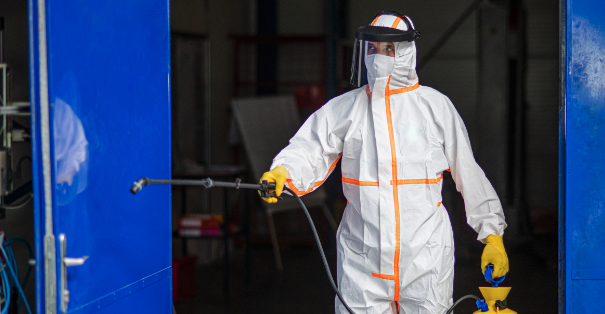SafeDE News
Smarter workplaces are safer workplaces. SafeDE is your resource for OSHA news, regulation changes, recalls, and everything to keep your business safe.
Tips for Selecting the Right Hard Hat for Electrical Work
Electrical injuries are the fourth-leading cause of workplace-related traumatic death. In the United States alone, there are approximately 1,000 annual deaths attributed to electrical injuries, with about 400 related to high-voltage incidents.
To reduce the number of fatalities, it is important to discuss the importance of safety in electrical work. Proper protective gear plays a crucial role in reducing the risk of workplace injuries and fatalities resulting from electrical hazards.
The industrial helmet, commonly known as the hard hat, is one of the most critical pieces of safety equipment for electrical work. Since not all hard hats are made the same, this article will provide you with tips on choosing the appropriate hard hat for electrical work based on Occupational Safety and Health Administration (OSHA) recommendations.
Choosing the Right Hard Hat for Electrical Work
Electrical hazards like shock, burns, and arc flash may occur if you work near conductors, circuits, and other live electrical equipment. According to OSHA, employees working in industries with a possible risk of burns and electrical shock must wear protective helmets. Electrical hard hats can help reduce the impact of these accidents by conducting electrical currents away from the wearer when exposed to live wires.
OSHA section 29 CFR 1910.135 provides guidelines for working safely with electricity, including using appropriate personal protective equipment (PPE) like hard hats. Consider the following factors when selecting hard hats for electrical work:
1. Pay Attention to Electrical Classifications
Hard hats can be classified into three categories based on their level of protection against electrical hazards: Class E (Electrical), Class G (General), and Class C (Conductive). The material used in a hard hat shell is a critical factor in determining its safety and durability in various industries.
Class E (Electrical):
The Class E hard hat is designed to reduce the wearer’s exposure to high-voltage conductors, offering protection against electrical hazards of up to 20,000 volts. This classification is highly advised for those who regularly work on or near electrical equipment such as transformers and generators. The shells of Class E hard hats are typically made of fiberglass-reinforced plastic or high-density polyethylene (HDPE), lightweight materials that provide excellent impact resistance and most importantly, electrical insulation. To maximize electrical protection to the wearer’s head, Class E hard hats are fully enclosed and non-vented to prevent electrical current from passing through any holes in the shell.
Class G (General):
Class G hard hats are rated to protect the wearer against low-voltage conductors. They are usually made of heat-resistant materials like fiberglass to protect the wearer from high temperatures, while also offering electric protection of up to 2,200 volts. Class G hard hats can also be vented, helping the wearer cool off in hot working conditions.
Class C (Conductive):
The Class C hard hat is typically made of aluminum, a highly conductive material. These types of hard hats are lightweight but can still protect the wearer’s head from falling objects. However, they do not provide any form of electrical insulation and are therefore not recommended for electrical work. Class C hard hats are better suited for workers in industries that need protection from falling debris but are not at risk of electrical shocks or burns.
2. Check for Proper Certification
Hard hats with the ANSI/ISEA Z89.1-2014 certification indicate that their manufacturer satisfied the safety standards for head protection set by the American National Standard for Industrial Head Protection (ANSI) and the International Safety Equipment Association (ISEA). The certification can be found in the inner lining of the hard hat, commonly beside the manufacturer’s name. Hard hats that are certified by ANSI/ISEA are the ones recommended by OSHA for use in electrical work because they offer the best protection against electrical hazards.
3. Consider Additional Features
Aside from electrical protection, you should also consider other features that improve the wearer’s comfort and usability. For example, some hard hats come with adjustable suspension systems that secure them properly to the head. Many come with visors to offer additional protection from falling debris.
In conclusion, selecting the right hard hat for electrical work is crucial in ensuring head protection in the workplace. Understanding the different types of electrical hazards, choosing the right electrical classification, checking for proper certification, and considering additional features are all key factors to keep in mind. By following these tips and OSHA guidelines, those who work in occupations involving electrical hazards can protect themselves better.
Frequently Asked Questions (FAQs)
What class of hard hats is recommended for electrical work?
The Class E hard hat is designed to provide the highest level of protection against electrical hazards. It can protect the wearer against voltages of up to 20,000 volts.
How do I know if my hard hat is suitable for high-voltage protection?
Check the manufacturer’s manual of your hard hat to confirm its 'Class E' rating, indicating its suitability for electrical protection against voltages of up to 20,000 volts. You should also inspect the inner lining of the hard hat if it has a Z89.1-2014 certification, signifying that it meets ANSI/ISEA standards and OSHA guidelines for head protection in electrical work.
What is the voltage rating for class E hard hats?
Class E hard hats can protect the wearer against electrical shocks from voltages up to 20,000 volts.
What is the CSA Z94.1 standard for hard hats?
The CSA Z94.1 is the standard for workplace protective headgear established by the Canadian Standards Association (CSA). It highlights the specifications and requirements for hard hats to qualify them as safe to use in industries such as construction. The CSA Z94.1-2015 is the Canadian equivalent of ANSI/ISEA Z89.1-2014 certification in the United States.
What are some safety tips for using hard hats in electrical work?
Choose only Class E hard hats when working on or around high-voltage electrical devices. Before using the hard hat, conduct a thorough inspection to ensure it is free from any signs of damage. Choose the right size of hat that fits securely on the head, and consider the use of chin straps and face shields if necessary.
Get SafeDE News
Workplace safety for all businesses.
SafeDE provides FREE comprehensive onsite surveys for small and medium sized private sector establishments to identify potential workplace hazards, improve safety and health management systems, and assist in voluntary compliance with federal OSHA regulations.
Related News

The 5 Rules of Effective Incident Reporting
-1.png)
Essential Tips to Prevent Heat Illness in the Workplace
-1.png)
Preventing Ergonomic Injuries: Tips and Strategies
.png)
How Forklift Stability & Center of Gravity Connected?
-1.png)
Recognizing Warning Signs of Heat Illness at Work

Mastering First Aid: Steps for Effective Injury Assessment

Essential PPE for Staying Safe and Comfortable in Hot Work Environments
.png)
Lockout Tagout Training: Essential Safety Program
.png)

-1.png)

